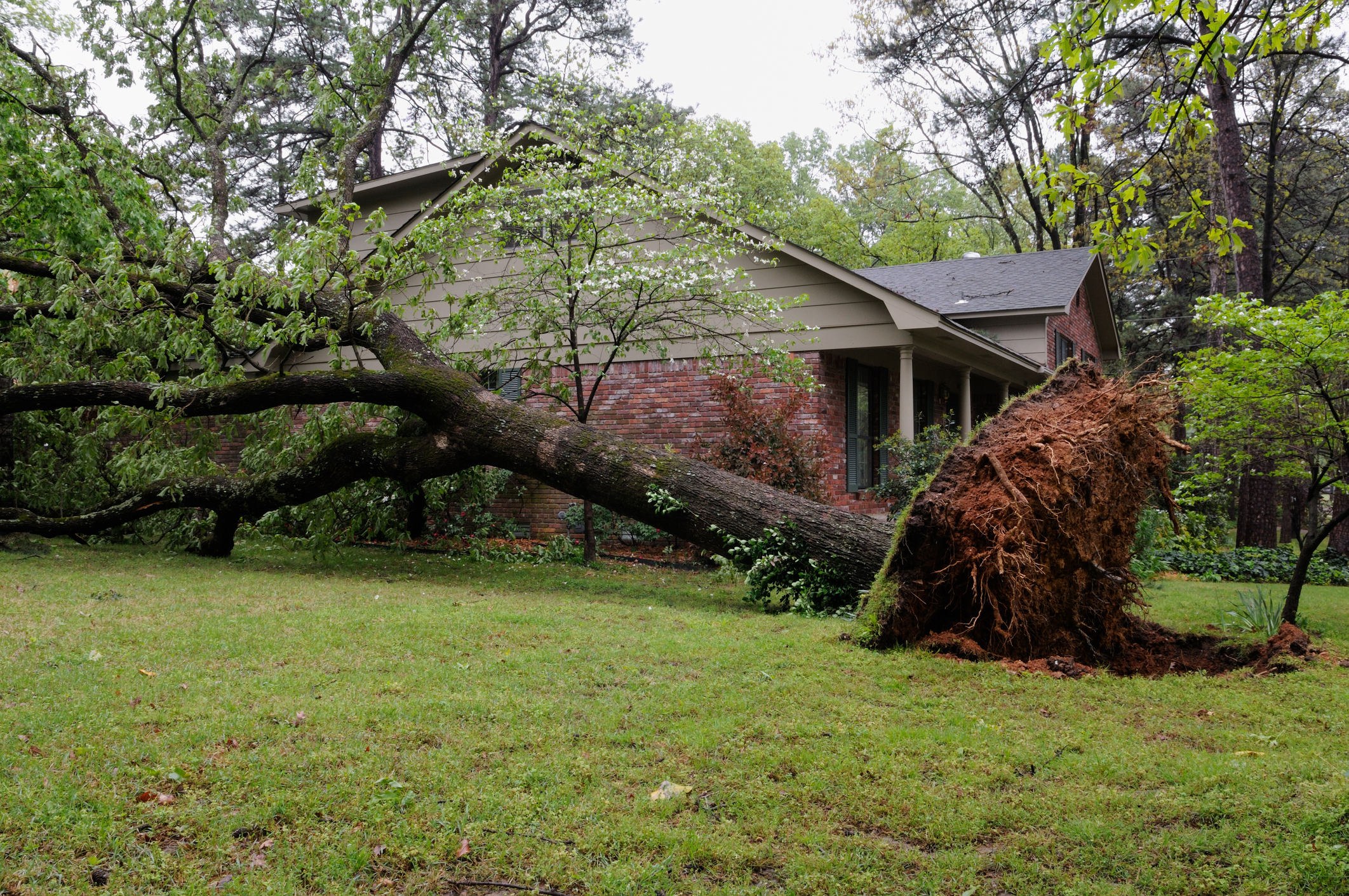Summer storms can be both beautiful and dangerous. While the rain nourishes our landscapes, thunderstorms often bring high winds, heavy rainfall and even hail, which can wreak havoc on trees. The professionals at Excel Tree Care understand the importance of safeguarding your trees to ensure they remain healthy and resilient during treacherous summer storms. Keep reading to learn preventive measures for protecting your trees from dangerous weather, as well as essential post-storm care to promote recovery and longevity.
Understanding the Risks
First, it’s crucial to understand the risks that summer storms pose to trees:
- High Winds: Strong winds can uproot trees or break branches, leading to property damage or injuries.
- Heavy Rain: Excessive rainfall can lead to soil erosion, root rot and waterlogged soil, weakening a tree’s foundation.
- Lightning Strikes: Trees are often struck by lightning, which can cause severe damage to the trunk and foliage.
By understanding these risks, homeowners can take proactive steps to mitigate damage.
Preventive Measures
1. Regular Pruning
One of the most effective ways to prepare your trees for summer storms is through regular pruning. Removing dead or weak branches helps to minimize the risk of breakage during high winds. Proper pruning also encourages healthy growth and improves airflow through the tree’s canopy, reducing the likelihood of disease.
2. Tree Assessment and Health Checks
Having a professional tree service conduct routine assessments can identify potential problems before they escalate. Look for signs of disease, decay or pest infestations. An experienced arborist can evaluate the health of your trees and recommend treatments or removals if necessary.
3. Root Health Maintenance
Strong roots equal strong trees. Ensure that your trees are planted in well-draining soil and receive adequate nutrients. Avoid compacting the soil around the roots, as this can impede growth and stability. Mulching around the base of the tree can help retain moisture and protect the roots from heat stress.
4. Structural Support
For particularly tall trees, or those that are particularly susceptible to wind damage, consider installing structural support systems. Cabling and bracing can help stabilize weak branches and trunks, providing additional support during storms. Consult a professional to determine the best approach for your specific tree species and conditions.
5. Choosing the Right Tree Species
When planting new trees, consider their resilience to storms and local climate conditions. Some species, such as live oaks and cypress trees, are generally more resistant to high winds and extreme weather. Consulting with a professional arborist can help you select tree species that thrive in your area and are less likely to suffer storm damage.
6. Watering and Fertilization
Proper hydration and nutrition play a crucial role in a tree’s resilience. During dry spells leading up to storm season, ensure your trees are adequately watered. A well-nourished tree can withstand stress better than one that is struggling for resources.
Post-Storm Care
Even with the best preventive measures, storms can still cause damage. Knowing how to care for your trees after a storm is essential for their recovery.
1. Assessing Damage
After a storm, it’s crucial to assess the damage carefully. Look for broken branches, uprooted trees or any visible signs of stress. Documenting the damage can help in deciding the next steps and may be necessary for insurance claims.
2. Immediate Clean-Up
Clear away any fallen branches and debris from around your trees. This not only improves safety but also prevents potential disease or pest problems. If branches are still attached but damaged, carefully prune them to prevent further injury to the tree.
3. Consulting a Professional
For significant damage, such as a split trunk or extensive branch loss, it’s best to consult a professional tree service. Arborists can assess the damage and recommend the best course of action, whether that’s pruning, cabling, or, in extreme cases, removal.
4. Watering and Mulching
After a storm, trees may become stressed. Watering them adequately and applying mulch around their base can help retain moisture and promote healthy growth. Avoid over-watering, which can lead to root rot.
5. Monitoring for Pests and Diseases
After a storm, trees may become more vulnerable to pests and diseases. Regularly inspect your trees for any signs of infestation, and take immediate action if any issues arise. Early detection is key to saving your trees.
Reach out to the Professionals
Safeguarding your trees from summer storms requires being proactive and responsive. Consistent pruning, managing root health and ensuring structural support, homeowners can significantly reduce the risk of storm damage. Also, understanding how to care for trees post-storm is crucial for promoting recovery and longevity.
As your trusted tree service company, we are dedicated to helping you protect and care for your trees. Whether you need preventive measures, emergency care, or ongoing maintenance, our team of experienced arborists is here to assist you every step of the way. Together, we can ensure that your trees remain healthy, beautiful and resilient through all seasons, including the most tumultuous summer storms.

